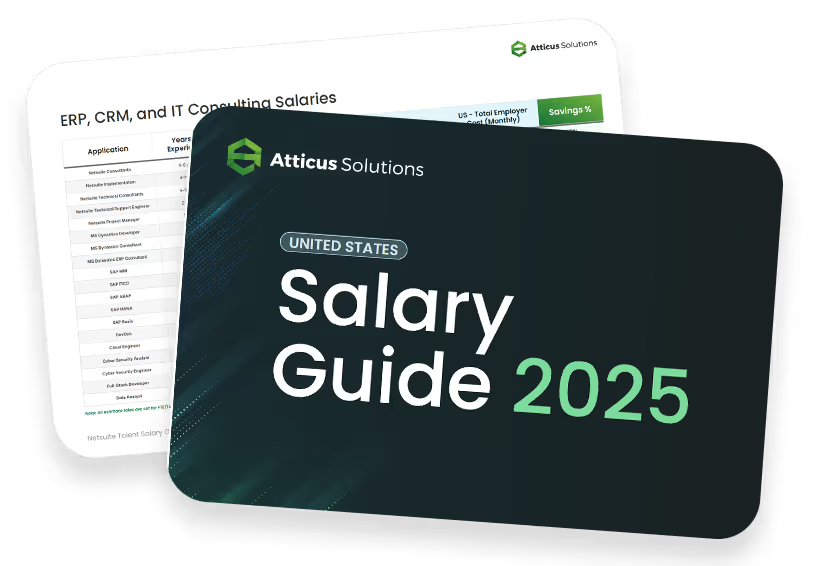Recruiting with Data-Driven Technology: Enhancing Hiring Efficiency and Accuracy

Ever wondered why some hiring decisions feel like shots in the dark while others seem like strokes of genius? The secret lies in objective insights.
Recruiting with data-driven technology has become increasingly popular in recent years as companies strive to make objective, evidence-based hiring decisions.
By leveraging data from various sources, including applicant tracking systems (ATS) and candidate assessment solutions, recruiters can gain valuable insights into candidate qualifications, skills, and fit. This allows them to make more informed hiring decisions based on objective data rather than subjective intuition.
Data-driven recruiting also enables companies to improve the efficiency and productivity of their hiring process.
By tracking metrics such as source of hire and candidate engagement, recruiters can identify areas for improvement and optimize their recruitment strategies accordingly. This can reduce the hiring time, improve candidate quality, and ultimately drive business growth.
This article will explore the benefits of recruiting with data-driven technology and provide best practices for implementing a data-driven recruitment strategy.
Whether you are a seasoned recruiter or just starting out, this guide will provide you with the knowledge and tools you need to maximize data-driven recruitment and take your hiring process to the next level.
The Role of AI and Analytics in Modern Recruiting
Artificial Intelligence (AI) and Analytics are revolutionizing recruitment by providing data-driven insights to recruiters, enhancing the candidate experience, and improving the quality of hire.
This section will explore how AI and Analytics are changing the recruitment landscape.
1. Enhancing Candidate Experience with Data
AI and Analytics tools can help recruiters personalize the candidate experience by providing insights into candidates' preferences, interests, and skills. This information can be used to tailor the recruitment process, making it more engaging and relevant to candidates.
For example, recruiters can use chatbots to provide candidates real-time feedback on their application status, answer their questions, and provide personalized recommendations.
2. Predictive Analytics for Quality of Hire
Predictive analytics offers recruiters a powerful tool to identify top candidates by analyzing diverse data sources like resumes, social media profiles, and job performance metrics.
This method creates predictive models to pinpoint the most suitable candidates, elevating the quality of hire, minimizing turnover, and boosting employee retention.
3. Leveraging Big Data for Sourcing and Talent Acquisition
Leveraging big data enables recruiters to pinpoint optimal talent sources by analyzing various channels, such as social media, job boards, and employee referrals.
Crafting a data-driven sourcing strategy efficiently identifies the best candidates, resulting in reduced hiring time, enhanced hiring efficiency, and increased talent acquisition ROI.
3 Key Metrics for Data-Driven Hiring Decisions
When it comes to data-driven recruiting, there are several key metrics that you should be tracking to make informed hiring decisions. By analyzing these metrics, you can gain valuable insights into your recruitment process and identify areas for improvement.
Here are three of the most important metrics to consider:
1. Time-to-Hire and Hiring Speed
Time-to-hire is a critical metric for measuring the efficiency of your recruitment process. This metric tracks the time it takes to fill a job opening from the time the job is posted to the time the candidate accepts the offer.
By tracking time-to-hire, you can identify bottlenecks in your recruitment process and take steps to streamline it.
Hiring speed is another important metric that measures the speed at which you can fill job openings. This metric is particularly important in fast-paced industries, where the ability to fill vacancies quickly can significantly impact business performance.
2. Diversity Metrics and DEI Goals
Diversity metrics are an essential component of any data-driven recruitment strategy.
By tracking diversity metrics such as the percentage of underrepresented groups in your candidate pool, you can identify areas where you may need to improve your recruitment efforts to attract a more diverse pool of candidates.
DEI (Diversity, Equity, and Inclusion) goals are another critical aspect of data-driven hiring decisions. By setting clear DEI goals and tracking progress towards those goals, you can ensure that your recruitment efforts are aligned with your organization's values and priorities.
3. Retention Rate and New Hire Turnover
Retention rate is a crucial metric for measuring the effectiveness of your recruitment process. This metric tracks the percentage of new hires who remain with the company for a specified period (usually one year).
By tracking the retention rate, you can identify areas for improvement in your recruitment efforts to attract candidates who are a better fit for your organization.
New hire turnover is another important metric that measures the percentage of new hires who leave the company within a specified time (usually one year).
By tracking new hire turnover, you can identify areas where you may need to improve your recruitment efforts to attract candidates more likely to stay with the company long-term.
Overcoming Challenges in Data-Driven Recruitment
Recruiting with data-driven technology can streamline the hiring process and help employees make more informed decisions. However, organizations may face several challenges when implementing data-driven recruitment strategies.
Here are a few ways to overcome these challenges:
Addressing Data Quality and Collection Issues
One of the biggest challenges in data-driven recruitment is ensuring the quality and accuracy of the data being collected. This can be particularly difficult when dealing with large volumes of data from multiple sources.
To ensure that your data is of the highest quality, don’t forget to:
- Establish data quality standards and protocols
- Regularly monitor and audit data for accuracy and completeness
- Use data cleansing and normalization techniques to eliminate errors and inconsistencies
- Collect data from a variety of sources to ensure a comprehensive view of candidates
Navigating Unconscious Bias and Ethical Concerns
Another challenge in data-driven recruitment is the potential for unconscious bias and ethical concerns.
While data can provide valuable insights into a candidate's qualifications and fit for a role, ensure that these insights are not influenced by factors such as race, gender, or age.
To minimize the risk of bias and ethical concerns, it is important to:
- Use diverse data sources to reduce the risk of bias
- Regularly review and audit data for potential bias
- Ensure that algorithms and models used in data analysis are transparent and explainable
- Provide training to recruiters and hiring managers on the risks and challenges of data-driven recruitment
Integrating Technology with Human Insight
Finally, a key challenge in data-driven recruitment is finding the right balance between technology and human insight.
While data can provide valuable insights into a candidate's qualifications and fit for a role, remember that recruitment is ultimately a human process.
To ensure that technology is used effectively and in conjunction with human insight, make sure to:
- Use technology to automate repetitive tasks and provide insights into candidate qualifications and fit
- Provide training to recruiters and hiring managers on how to use data effectively
- Encourage collaboration and communication between recruiters, hiring managers, and data analysts
- Regularly review and audit recruitment processes to ensure that technology is being used effectively and in conjunction with human insight
By addressing these challenges, organizations can effectively leverage data-driven technology to improve their recruitment processes and make more informed hiring decisions.
Conclusion
Incorporating data-driven technology into your recruitment strategy can significantly increase efficiency and improve the quality of your hires. By analyzing data on candidate qualifications, skills, and experience, you can identify the best candidates for the job and streamline the hiring process.
One of the key advantages of data-driven recruitment is the ability to eliminate bias. By using objective data to evaluate candidates, you can reduce the impact of unconscious biases and ensure that you are selecting the most qualified candidates based on their skills and experience.
Another benefit of data-driven recruitment is the ability to predict future hiring needs. By analyzing data on your current workforce and industry trends, you can anticipate future talent needs and proactively recruit candidates to fill those roles.
Investing in the right technology and tools is important to take advantage of these benefits. Look for solutions that can help you collect and analyze data on your hiring process and candidates, such as applicant tracking systems and talent analytics software.
To learn more about optimizing your hiring process and attracting top talent, download Atticus Solutions' Salary Guide.
This comprehensive guide provides expert insights on hiring NetSuite experts for your business, helping you make informed decisions and stay ahead of the competition.
Frequently Asked Questions

Compare NetSuite ERP talent salaries
Attracting top NetSuite talent with clear job descriptions is the first step. Understanding salaries is your next key move! Download this free salary guide to view talent costs, offshore hiring tips, and more
View More Blogs

The Rise of Gen Z in the Workforce: What Companies Can Expect
.jpeg)
NetSuite Administrator Guide: When to DIY vs. When to Hire

The Complete Guide to NetSuite Accountants in the Philippines
Learn how to scale your business

What is Your Strategy for Finding Rare Skill Sets like NetSuite Accountants?
Join our talented team. We are a small, passionate team with a commitment to hiring the best.


